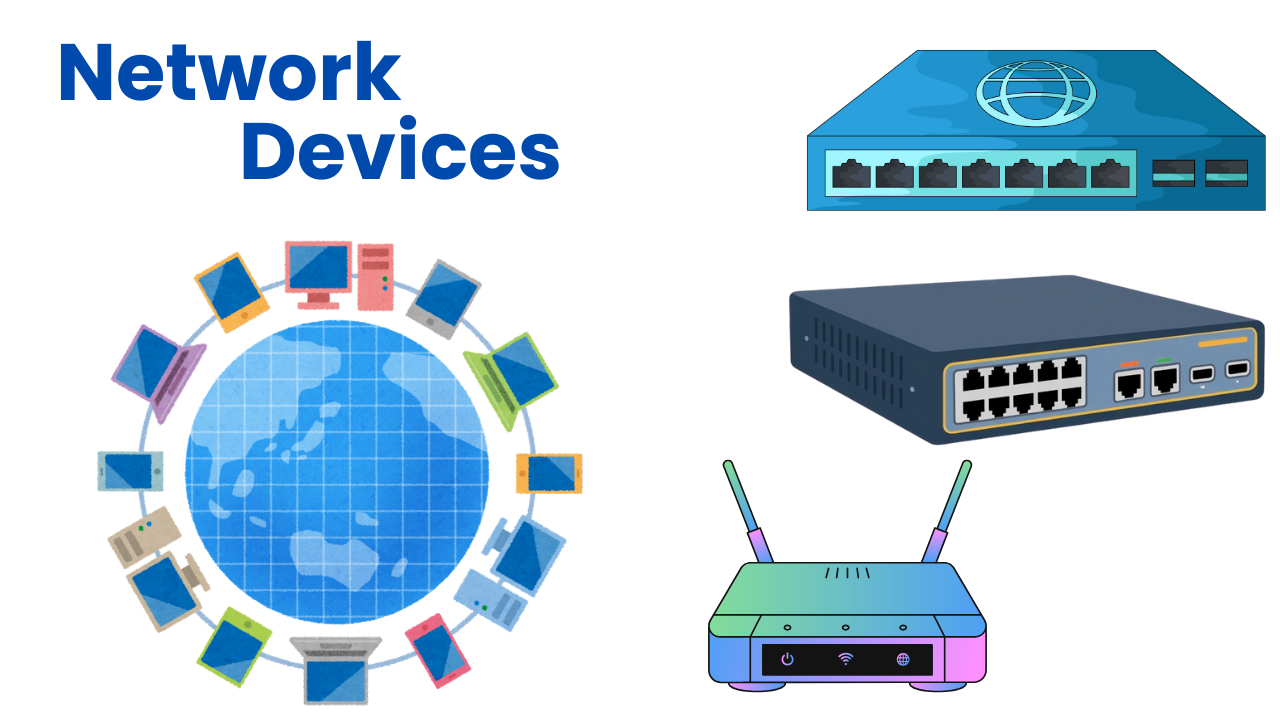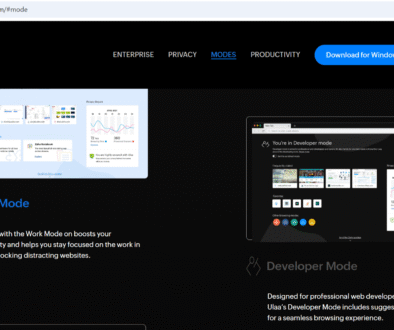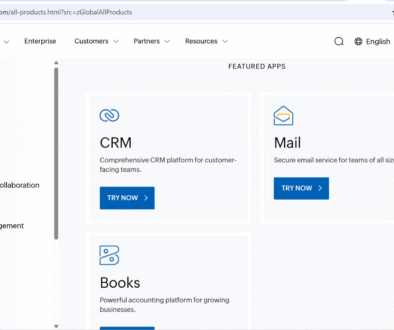Computer Network Devices
Computer Network Devices
Let’s understand the common computer network devices in this tutorial. Network devices are devices that connect multiple computers and devices on the computer network.
Network devices
- Concentrator
- Network Interface Card
- Repeater
- Hub
- Bridge
- Switch
- Router
- Gateway
Concentrator:
A concentrator aggregates multiple network connections into a single link, often used in older or legacy systems. It functions similarly to a hub or multiplexer, reducing the number of physical lines needed. Commonly found in mainframe or terminal-based environments. It may perform basic signal regeneration but lacks intelligence for traffic management.
Network Interface Card (NIC):
A NIC is a hardware component that connects a computer to a network, enabling communication over wired or wireless media. It provides a unique MAC address for device identification on the local network. Modern NICs support high-speed Ethernet standards and often include built-in drivers. It operates at the Physical and Data Link layers of the OSI model.
Repeater:
A repeater regenerates or amplifies weak signals to extend the range of a network segment. It operates at the Physical layer and does not filter or manage traffic. Used primarily in large networks where signal degradation is a concern. It simply forwards all incoming signals without examining data content.

Hub:
A hub is a basic networking device that connects multiple Ethernet devices, broadcasting all incoming data to every port. It operates at the Physical layer and creates a single collision domain. Hubs are largely obsolete, replaced by switches for better performance. They offer no traffic filtering or intelligence.
Bridge:
A bridge connects two or more network segments at the Data Link layer, filtering traffic based on MAC addresses. It reduces collision domains by forwarding frames only when necessary. Bridges learn device locations over time to make forwarding decisions. Useful for segmenting LANs without routing.
Switch:
A switch connects devices within a LAN and forwards data intelligently using MAC addresses. It operates at the Data Link layer (Layer 2), though some support Layer 3 (routing) functions. Each port forms its own collision domain, improving network efficiency. Modern networks rely heavily on switches for high-speed, low-latency communication.
Router:
A router directs data packets between different networks using IP addresses, operating at the Network layer (Layer 3). It determines the best path for data using routing tables and protocols. Routers enable communication between LANs and the internet. They also provide features like NAT, firewall capabilities, and DHCP services.
Gateway:
A gateway connects networks with different architectures or protocols, enabling communication between dissimilar systems. It can operate across all OSI layers, translating data formats and protocols as needed. Often serves as an entry/exit point to another network (e.g., cloud or mainframe). In home networks, the router often acts as the default gateway to the internet.


